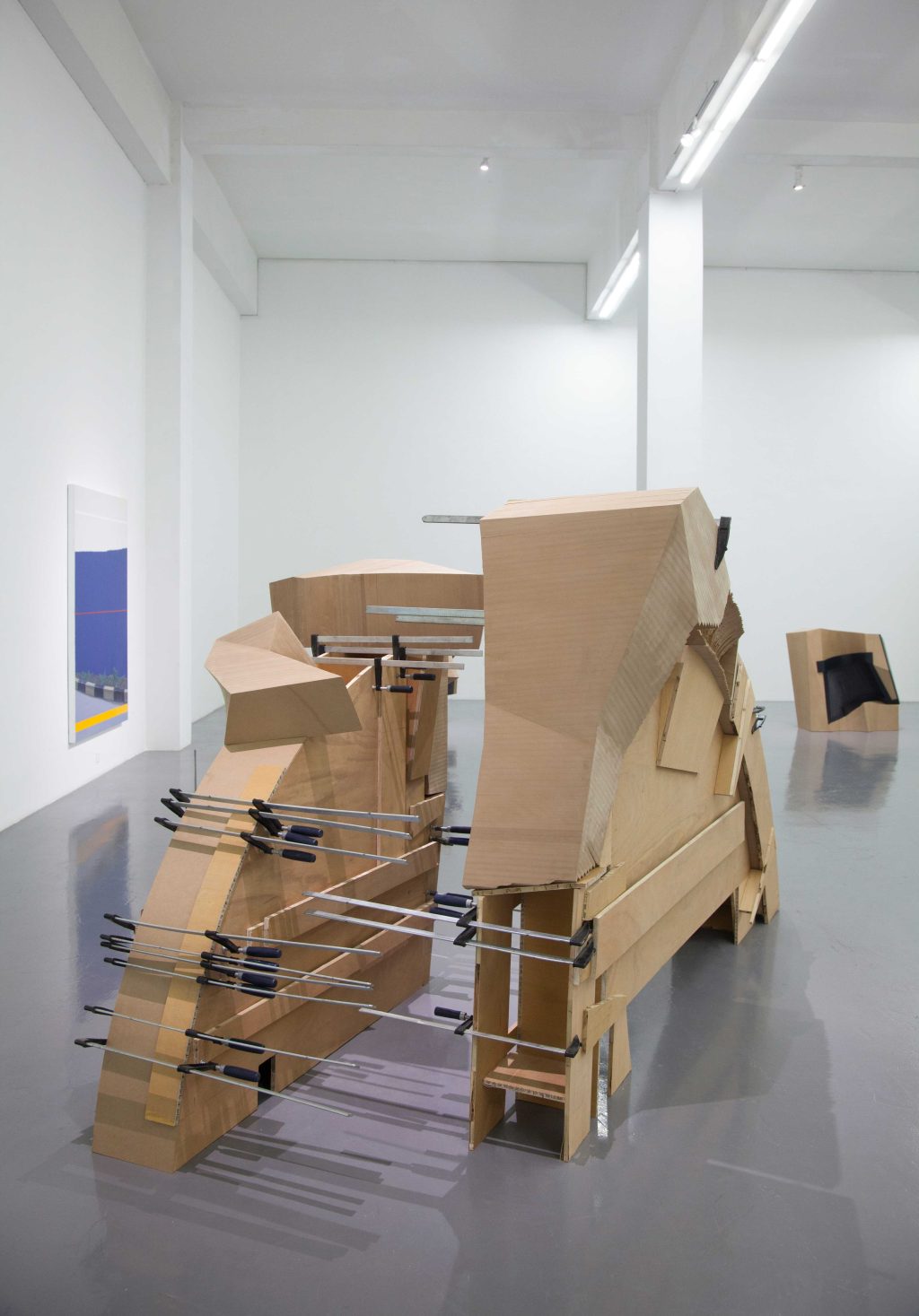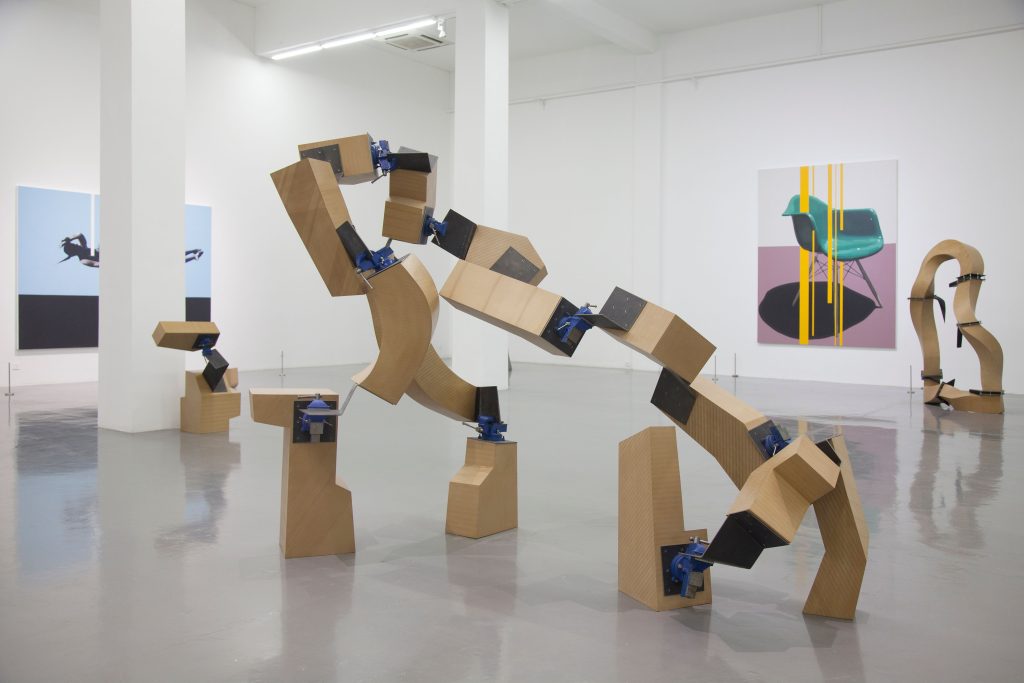- -+
Some Notes About My Work
Introduction
I.
In the book of “the principle of complementarity”(wrote by Louis Victor de Broglie), we are impressed firstly by the questions that how to consider two representations in total at the same time and how to achieve the complete description of micro phenomenon?
Wave mechanics tells us that we should put the two images together and build a certain relation between them so as to make them not to conflict directly but to supplement mutually. From Bohr what we get is a brand-new attribute with more wide sense than physics.
Here, our thinking should be extended to the micro level: i. the world is excluded by a sort of “normal” vision and standard; ii. the ability of viewing the same thing through contradictory representations. Besides, the existence of generality and continuity of concept lies in the encounter of physics knowledge and art.
II.
How should we understand the universal knowledge? And how is it identified and how does it keep its continuity?
In apostle Paul’s words about resurrection, we can see such dimensions: i. The death of Christ is not a physical death, but refers to a meaning that only after the old things die the new things can be born, i.e. the new things can only be born when the currently existed judgement, opinions, rationality and criteria died. From this sense, resurrection means that at the very beginning the new things should not be able to be classified and judged by the current world. ii. Here what died is not a Greek, Jews, neither a man nor woman, but the human being— a universal dimension. Death produces the differentiation between human and discourse, or can we say that death produces a being-towards-death subject? So, what exactly is the universality that is still vague and can not be named by the current orders?i.e. how to carry out the practice of universality?
III.
In my hometown, Sichuan province of China, a custom has lasted till nowadays. Strangers get together at the tea house and extend information mutually by the means of tell story (Long Men Zhen). In these information some sort of folk wisdom,traditional narration, local dialect are mixed. People often put the current prevailed topic under a fixed story frame and add new content continuously, which often makes you realize suddenly that there is a new connection between the anecdotes and the current things through the repeated narration. They are just like the side note to an official history book, and most of these people who make the side note are excluded by the “center” that they are talking about. Being a nobody that his/her identity my be neglected, they produce a universal information which coexist with the information of mainstream media and meanwhile keep the continuity.
In a field where a certain discourse may be produced, the table is the “center”, and narrator and the listeners are all “marginal”. Every individual is in the equal vision and the marginal universality is made from their ignorance of this. They can not speak as a subject but only to tell the story that “others” may also can see and hear. Here “others” does not refer to fictional People.
Their encounter and raising questions to reality is not only a question to their identities but also a rehearsal to a certain media.
IV.
In a ecological book named “Studies on Population Ecology”(wrote by Xu Rumei), we can see an experimental method: building a greenhouse ecosystem and studying the different distribution of organism and the interaction of abundance. It is a controllable developing system.
i. Being controllable: compared with natural ecological system, it shows its simplicity. It usually contains only one species and the pest related to this species, and one parasite that is natural enemy of the pest. The pest and its natural enemy live in the same environment, and the same material condition(light, temperature, humidity) is controllable. Besides, the physiological state and growth development are also controllable.
ii. Openness: there is always an exchange of energy and material between the artificial ecosystem and the environment, i.e. the input and output of the energy flow of the artificial system.
What revelation does this general experiment bring us?
The system experiment shows us several basic biological components: crops, pest, natural enemy, and the derivative — the born of detritus feeder and it constructs the second biological chain — detritus feeder biological chain.
Firstly: The second biological chain that was deemed unimportant produces the surplus of the environment, which is excluded out of the purposiveness of the experiment as an “accident” that can be neglected by the main system. That is to say, there is some kind of gap between the countable producer and the amount of biomass of consumer, which is produced in the doubly association of inevitability and randomness.
Secondly: This simple modeling process had been designed for complicated ecological system, but meanwhile it presents the possibility of containing complexity. It as well produces uncertainty and keeps the generality from the specificity as the natural system it imitates.
Thirdly: The input-output of energy (the principle of controllability)works on the crops, pest, and has an effect on the growth, development rate of both of them. But at the same time, the growth rate, quantity, distribution of both of them have an effect on the mutual controllability conversely. The interaction between them is always filled with dynamic, uncertain and some sense of controllable surplus.
This experiment provides a work dimension for the practice of my studio, i.e. the practice built on the sense of comprehensive knowledge, and it should not be a simple suture of knowledge but focuses on the method of practice, test and constructing the world. A practice should not only offer a logistics product or exchange information based on individual specificity, but also permit any “participant” to keep some kind of continuity under the same condition and extend and produce new linkage mode at the sense of keeping the generality of this process.
Wang jianwei
Related Artworks
Dirty Substance
Mixed media – wood, metal, spray paint
Dirty Substance
Mixed media – wood, metal, spray paint
Dirty Substance
Acrylic and oil on canvas



